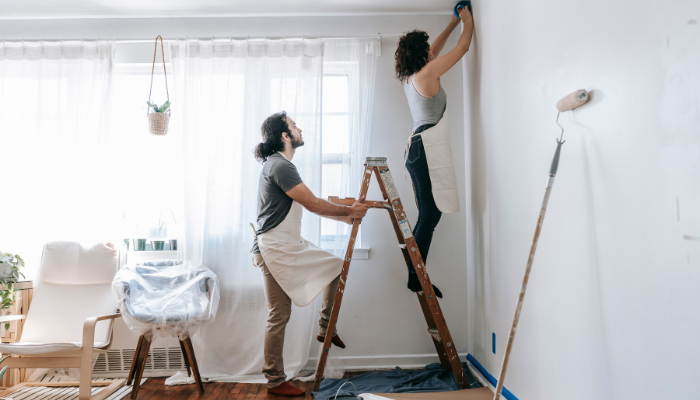
The concerns hounding the construction sector including the rising rates, shortage of supply, and surging inflation, are already manifesting in the deteriorating appetite of Australians to renovate their homes.
PropTrack senior economist Eleanor Creagh said this slowing came from a strong year for renovations — the value of renovations approved surged to $12.49bn in 2021, a 35% growth from the previous year and the highest since the records began in 1970s.
“Renovations requiring approval typically include changes to the structure of the building and usually, a simple kitchen or bathroom uplift does not include those types of changes so wouldn’t be included in the building approvals data — that means the actual value of all renovations is likely to have well surpassed even the record levels shown,” she said.
As more people spent their time at home amid the pandemic, many were able to take on their own renovation projects. This was supported by the government grants such as the homebuilder, the low-rate environment, and the buffed household savings.
These drove the overall value of renovation activity, which reached an all-time high in August 2021.
Here are the top 10 LGA regions where renovation value was the highest over the 12 months in 2022 and their share of the total construction work:
|
LGA |
Value of Renovations ($) |
Share of Total Construction Works (%) |
|
Brisbane |
877.71m |
9.6 |
|
Northern Beaches |
401.91m |
30.9 |
|
Boroondara |
291.15m |
19.7 |
|
Gold Coast |
288.03m |
6.7 |
|
Mornington Peninsula |
285.93m |
25.0 |
|
Sydney |
272.27m |
9.1 |
|
Stonnington |
271.91m |
21.2 |
|
Sunshine Coast |
234.05m |
10.6 |
|
Inner West |
223.03m |
27.4 |
|
Woollahra |
175.33m |
38.3 |
The cities with the highest renovation values were in larger inner-city and affluent areas with high housing values.
Furthermore, most of the more prime areas have a high share of renovation activity relative to the overall construction works.
“This makes sense even in the context of the HomeBuilder subsidy being in play given it wasn’t targeted at lower-income households, but rather was a broad-based support for the industry.” Ms Creagh said.
Weakening demand for renovations
Several macro and industry-specific factors, however, are starting to shift the tides in the renovation space.
The shortage in building supply and the supply chain disruptions globally, for instance, are now pushing prices up.
In fact, the value of renovation works approved in June 2022 was 14% lower than the record level seen in August last year.
Overall, the value of residential building approvals, which include new works, has declined 9% over the first half of the year compared to the previous year.
Over the past 12 months, input prices to construction went up 17.3%, driven by the surge in the cost of raw materials like timber and metal products.
“Labour shortages have even further driven up building construction costs, with the data showing house construction prices rose 6% in the June quarter – the strongest rise since the start of the series in 1996,” Ms Creagh said.
“The effect of rising interest rates, cost inflation, and uncertainty is evident across home builders.”
—
Photo by Blue Bird from Pexels.